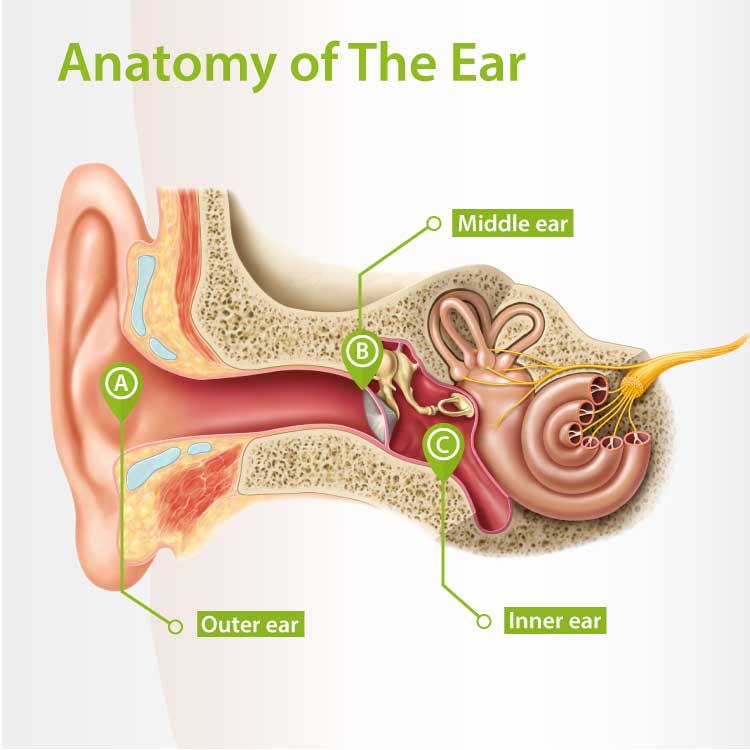_1.jpg?branch=web_prod)
About the ear

About the ear
15 minutes
Published: 18 July 2019
23 January 2025
We hear sounds without even thinking about it. But how does it work? Here’s your guide to the human ear and how our hearing works.
The structure of the human ear
The human hearing system consists of the outer ear, the middle ear and the inner ear.
The outer ear (auricle) that we commonly call our ear is only one part of hearing. The much bigger part of the ear is located in, and protected by, the skull.
The three parts of the ear are connected to each other via the ear canal. All acoustic systems run through it.
Tones, sounds and speech we hear are actually oscillations of the air. Before those oscillations are turned into sounds we can understand, they must pass from the outer to the inner ear via the middle ear - as well as all parts of our hearing system via the auditory nerve - to arrive in the brain as a signal.

How exactly does the ear work?
Air conduction versus bone conduction
Sound can reach the ear via air conduction or bone conduction.
In bone conduction, oscillating air hits the outside of the skull and makes it oscillate slightly. Conducted by the liquids in the ear, the oscillations reach the hair cells. Hearing via bone conduction is not as effective as air conduction hearing.
Did you know?
Bone sound wave conduction is the reason we find our own voice strange in recordings. You hear your own voice conducted via the air, instead of via the bones.
Author
Connect Hearing
Sonova
.png?branch=web_prod)
_1.jpg?branch=web_prod)
_1.jpg?branch=web_prod)
.png?branch=web_prod)